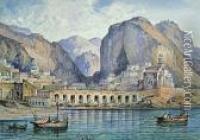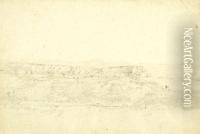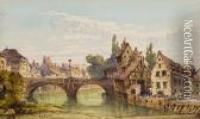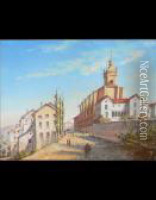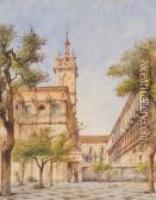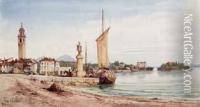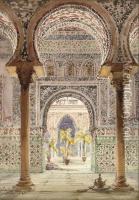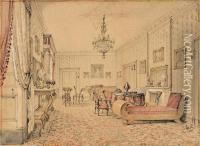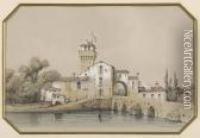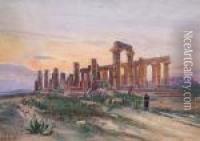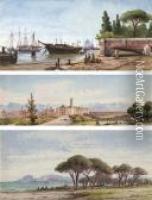Gabriele Carelli Paintings
Gabriele Carelli was an Italian painter known for his watercolors and landscapes, born in 1820 in Naples. He hailed from a family with strong artistic roots; his father Raffaele was a well-known painter, and his brother Consalvo also pursued a career in art. Gabriele received his initial training from his father and later studied at the Institute of Fine Arts in Naples.
His early works were influenced by the Neapolitan School and the picturesque tradition, focusing on the Italian landscape and daily life scenes. Carelli traveled extensively throughout his life, which greatly impacted his work. He visited countries across Europe, including England, where he lived for some time, and the Middle East, which inspired a series of Orientalist paintings.
Carelli's art was appreciated for its luminosity and attention to atmospheric effects, capturing the changing qualities of light in his landscapes. He was particularly adept at watercolor, a medium that allowed him to express a sense of immediacy and fluidity in his depictions of seascapes, rural scenes, and urban vistas. His travels to the Middle East in the 1840s introduced exotic themes into his work, and he became known for his detailed and vibrant portrayals of the region's architecture and culture.
Throughout his career, Carelli exhibited his works in Italy and abroad, gaining recognition and patronage. He became a member of the Society of British Artists in London and was also associated with the Royal Institute of Painters in Water Colours. His works can be found in private collections and museums, reflecting his international appeal and the enduring charm of his artistic style.
Gabriele Carelli passed away in 1900, leaving behind a legacy as a significant figure in 19th-century Italian watercolor painting. His contributions to landscape and Orientalist art remain appreciated by art historians and collectors alike.
